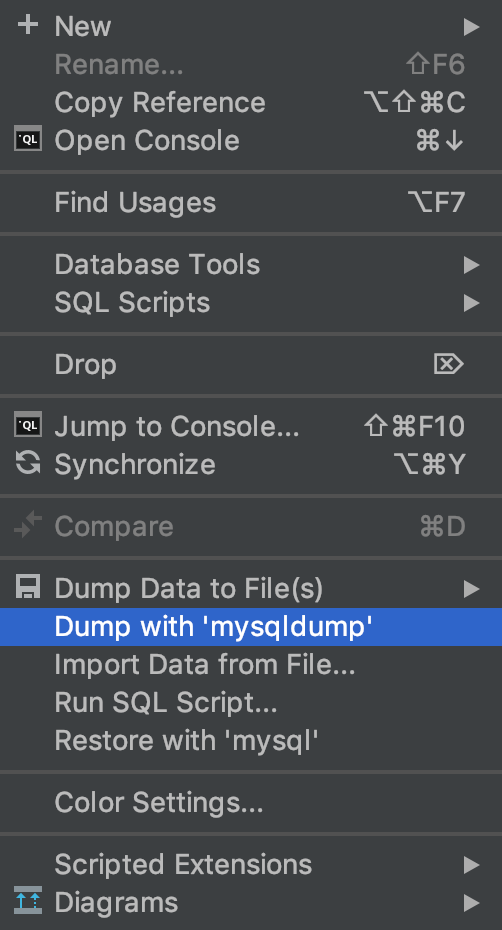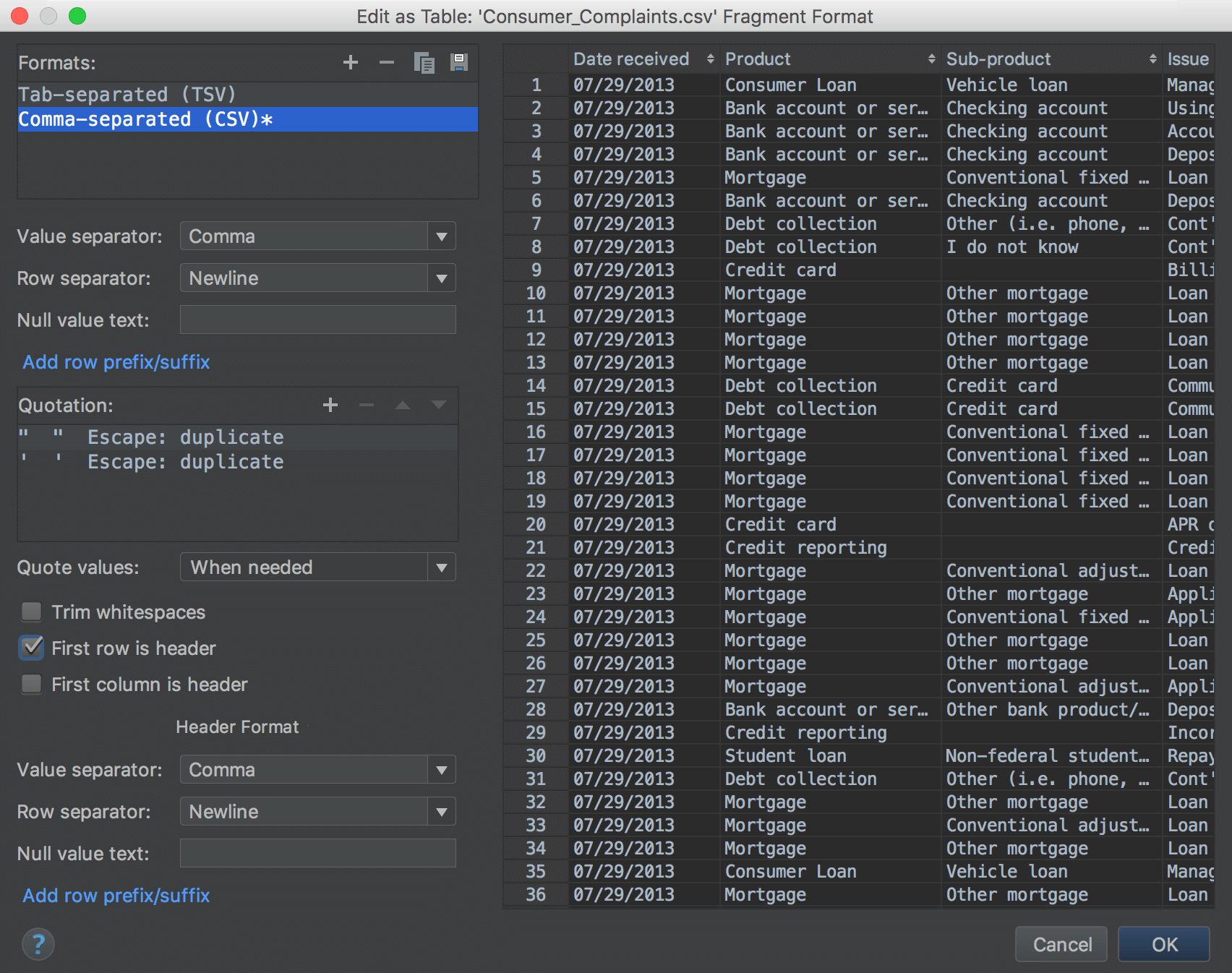

- DATAGRIP EXPORT DATA GENERATOR
- DATAGRIP EXPORT DATA UPDATE
- DATAGRIP EXPORT DATA FULL
- DATAGRIP EXPORT DATA WINDOWS
Alternatively, click a cell, press Ctrl+A and then Ctrl+C. To copy rows on the current page, double-click the table and press Ctrl+C. In contrast to the Export to Clipboard action, the Copy action Ctrl+C only copies the selection or all the rows on the current page. To export the whole result or the whole table to the clipboard, open a table or a result set, right-click the result or the table and select Export Table to Clipboard. Configure the export settings and click Export to File.

To export data to a file, open a table or a result set, click the Export Data icon ( ). To save the script to a file, click Export Data to Files. To copy the generated script to the clipboard, click Copy to Clipboard. Output file: select a file that will store the data. In this view, the rows and columns are interchanged.Īdd column header: adds a row with column names at the beginning of the CSV list.Īdd row header: adds a column with enumeration of rows. Transpose: select to export data in the transposed view. In the Export Data dialog, customize the following settings:Įxtractor: select the export format (for example, Excel (xlsx)).
DATAGRIP EXPORT DATA WINDOWS
In the Database Explorer ( View | Tool Windows | Database Explorer), right-click a database object and navigate to Export Data to Files. If you open a different table, the extractor defaults to CSV. Beginning from DataGrip 2020.1, you set the extractor for a single table. To export data in binary formats (for example, XLSX), use the Export Data dialog.īefore DataGrip 2020.1, if you select the default extractor from the list, you set this extractor as default for the whole IDE. In CSV settings, you can set separators for rows and headers, define text for NULL values, specify quotation, create new extractors for formats with delimiter-separated values. To configure CSV extractors, see Configure an extractor for delimiter-separated values. When you export to a file, a separate file is created for each individual table or view.
DATAGRIP EXPORT DATA UPDATE
You can export database data as SQL INSERT and UPDATE statements, TSV and CSV, Excel, Markdown, HTML tables and JSON format. If your database stores DDL of the object, you can retrieve DDL from the database by selecting the Request and Copy Original DDL. In the Database Explorer ( View | Tool Windows | Database Explorer), right-click a database object and select SQL Scripts | Generate DDL to Clipboard. Generate a DDL definition to the clipboard In the Database Explorer ( View | Tool Windows | Database Explorer), right-click a database object and select SQL Scripts | Generate DDL to Query Console. Generate a DDL definition to the query console
DATAGRIP EXPORT DATA GENERATOR
In the SQL Generator tool window, click the File Output Options icon ( ).įrom the Layout list, select a method that you want to use:įile per object: generates a set of SQL files.įile per object with order: generates a numbered set of SQL files. In the Database Explorer ( View | Tool Windows | Database Explorer), right-click a database object (for example, a table) and select SQL Scripts | SQL Generator Ctrl+Alt+G. Change output settings of the SQL Generator In MySQL and MariaDB, select Skip DEFINER clause to skip this clause when you generate DDL for a procedure or a function. The DEFINER clause specifies the security context (access privileges) for the routine execution. On the right toolbar, you can find the following controls: In the Database Explorer ( View | Tool Windows | Database Explorer), right-click a database object and select SQL Scripts | SQL Generator… Ctrl+Alt+G. Generate DDL definitions for database objects The following video shows how you can generate SQL for existing objects. In DataGrip, you can generate data definition structures by using shortcuts with predefined settings or by using the SQL Generator and customize the export settings. Exporting object structuresĭata definition language (DDL) defines the structure of a database, including rows, columns, tables, indexes, and other elements.
DATAGRIP EXPORT DATA FULL
For more information, see Create a full data dump for MySQL and PostgreSQL. The full data dump includes structures of all database objects and data of these objects in a single file. The full data dump is available for PostgreSQL and MySQL with the help of mysqldump and pg_dump. It means that you can export a structure of a table or a view and then export data from these objects.

In DataGrip, you export object structures and data separately. You can select a predefined extractor or create your own. Also, you can export data in TXT, CSV, JSON, XML, Markdown, Excel, and other formats. These methods include usage of various generators, data extractors, and shortcuts. You can use a variety of methods to export data and object structures from your databases.


 0 kommentar(er)
0 kommentar(er)
